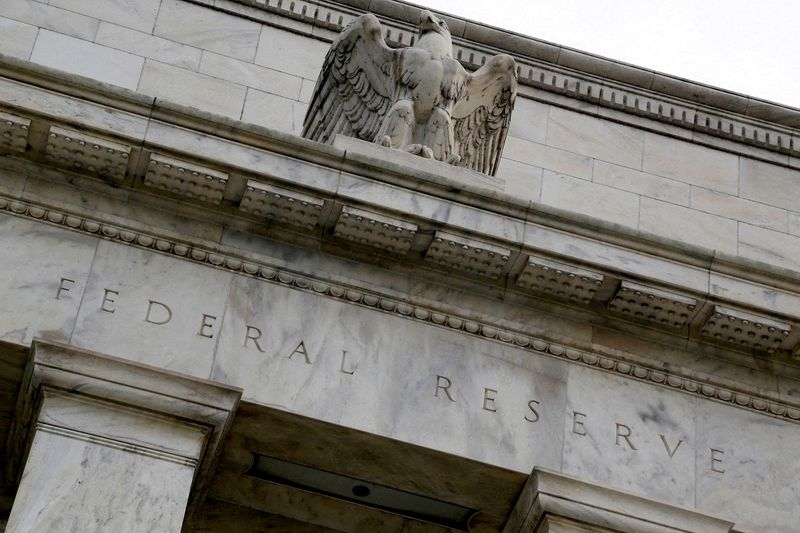By Ann Saphir
(Reuters) - U.S. central bankers began their last policy-setting meeting of the year Tuesday with data suggesting inflation is finally cooling, allowing them to slow their interest-rate hikes into next year and, traders are now betting, stop short of 5% by March.
Federal Reserve policymakers are still seen raising the policy rate by a half of a percentage point to a range of 4.25%-4.5% on Wednesday, a smaller increase than the 75-basis-point per meeting pace they had stuck to since June but still a large increase by historical standards.
But after a Labor Department report showed consumer prices last month rose at their slowest pace in nearly a year, futures contracts tied to the Fed policy rate moved to price in a further downshift next year. Traders are now betting on 25-basis-point increases at each of the Fed's first two meetings of 2023 and no more, with some chance the last hike could come in May instead of March.
Either way, that would bring the policy rate to the 4.75%-5% range, lower than some economists expect and markets had been betting, given what has been stubbornly high inflation and a stronger-than-expected labor market for much of this year.
Tuesday's report showed the consumer price index rose 0.1% in November from the month prior, down from a 0.4% pace in October. The deceleration suggests that the Fed's most aggressive set of interest-rate hikes in 40 years may finally be starting to slow demand and ease price pressures more broadly.
"Broadly speaking, this is very good news for the Fed – two sequential months of data pointing to softening in inflation," said Subadra Rajappa, Societe Generale (OTC:SCGLY)'s head of U.S. rates strategy.
Still, she said, with financial conditions easing - stocks surged after the report - and a 3.7% unemployment rate signaling a still-strong labor market, the Fed may end up needing to lift rates a bit higher than markets are currently pricing.
And when Fed Chair Jerome Powell gives his take on the policy trajectory in his post-meeting news conference Wednesday, she said, "I don’t see him pivoting in a meaningful way on policy – I think it's just too soon."
RATE CUTS?
Consumer prices rose 7.1% on year, the smallest increase since December 2021, Tuesday's data showed.
The increase remains far too high for comfort. The Fed targets 2% annual inflation as measured by the personal consumption expenditures price index, which typically runs a percentage point or two lower than the CPI.
Still, the under-the-hood data in the CPI report appeared to bolster the case for the Fed to back off on tightening.
Goods inflation eased, reflecting a decrease in pandemic-lockdown driven supply chain disruptions, with the measure excluding food and energy falling 0.5%. Meanwhile services inflation rose, driven by a 0.7% monthly jump in owners' equivalent rent - a measure of what homeowners would earn if they were renting their property.
Still, Fed policymakers say they are watching forward-looking trends like new lease rates that suggest easing in rental inflation next year. And services inflation excluding shelter was unchanged after a decline in October.
After the report, interest-rate futures pointed to about a half percentage point decrease in the Fed policy rate by the end of 2023, an apparent bet on some chance of a recession as higher borrowing costs keep more companies from expanding and slower sales force some into layoffs.

Powell for his part has said the Fed does not want to lower interest rates soon, but rather keep them high to continue to push down on inflation and bring it more decisively back to target.
The Fed will publish updated policymaker projections of unemployment, inflation and interest rates next year and beyond at the close of their meeting on Wednesday.